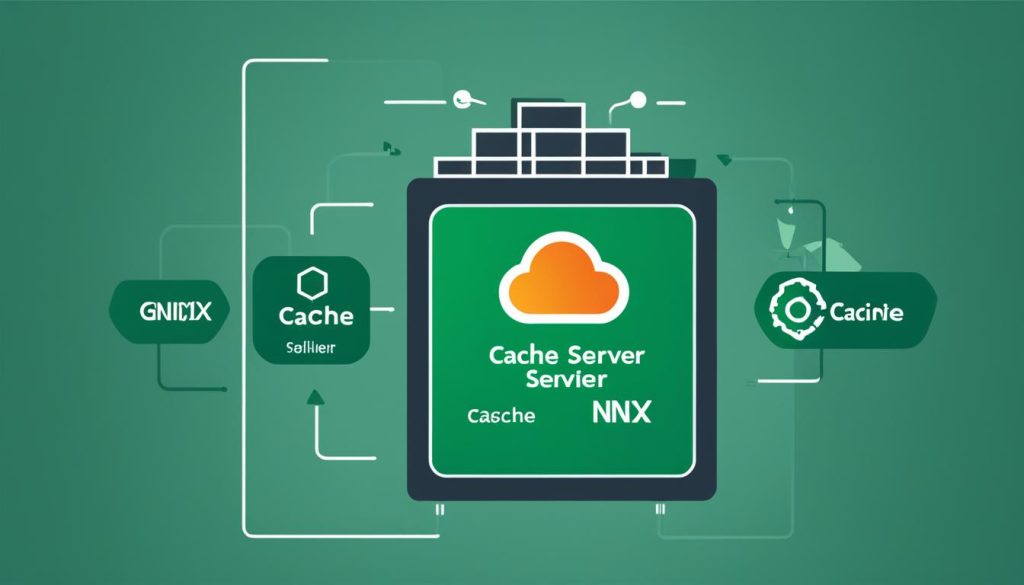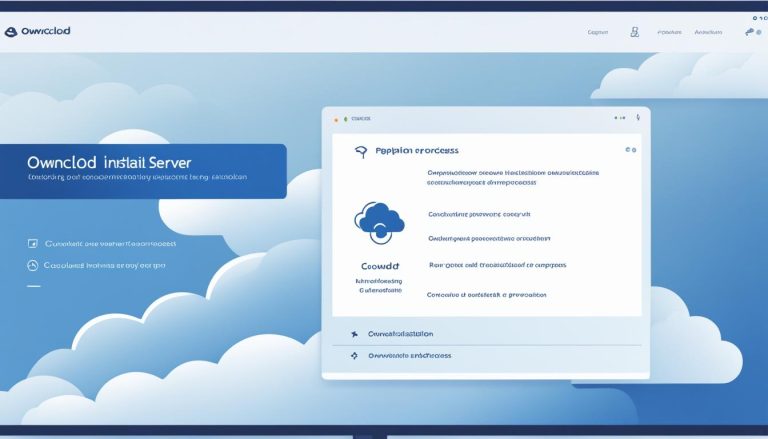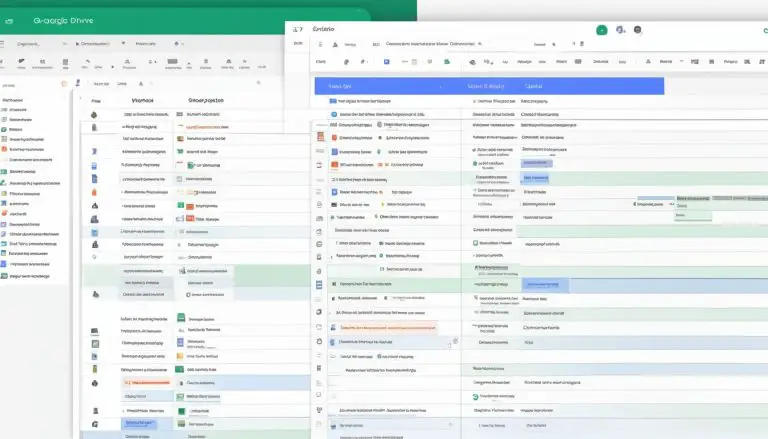What is ngx_http_proxy_module in Nginx
In today’s digital landscape, web applications need to deliver content quickly and efficiently. That’s where the ngx_http_proxy_module in Nginx comes into play. This powerful module enables server proxying and streamlines the delivery of web content.
So, what exactly is ngx_http_proxy_module? In simple terms, it acts as a reverse proxy or load balancer in an application stack. It helps distribute incoming traffic across backend servers, improving performance, and ensuring that every request is handled efficiently.
But ngx_http_proxy_module goes beyond just proxying. It also offers a range of caching features that can significantly enhance the performance of your applications. By implementing and optimizing caching, developers can reduce the load on backend servers and ensure faster content delivery to end-users.
Let’s dive deeper into the capabilities of ngx_http_proxy_module and explore how it can benefit your application stack.
Key Takeaways:
- The ngx_http_proxy_module in Nginx enables server proxying and load balancing.
- It offers powerful caching features that can significantly improve application performance.
- By optimizing caching, you can reduce the load on backend servers and streamline content delivery.
- ngx_http_proxy_module is a valuable tool for developers looking to enhance application performance and efficiency.
- Stay tuned as we explore the various configurations and optimizations possible with ngx_http_proxy_module.
Basic Caching with ngx_http_proxy_module
When it comes to optimizing web performance, caching plays a crucial role. With the ngx_http_proxy_module in Nginx, developers have access to a powerful caching feature that can significantly enhance the delivery of web content. By implementing basic caching configurations, you can improve your application’s performance and reduce the load on your origin server.
Enabling basic caching with ngx_http_proxy_module requires just two directives: proxy_cache_path and proxy_cache. Let’s take a closer look at each directive and how they contribute to the caching process.
The proxy_cache_path Directive
The proxy_cache_path directive is responsible for setting the path and configuration of the cache. It determines where the cached content will be stored and defines various cache settings.
When configuring the proxy_cache_path directive, you can specify parameters such as:
- Cache directory: The location where the cached files will be stored.
- Cache size: The maximum size of the cache, ensuring it doesn’t exceed a certain limit.
- Cache expiration: The duration for which the cached content will remain valid before it needs to be refreshed.
By fine-tuning these parameters, you can optimize the caching process to suit your application’s specific needs.
The proxy_cache Directive
Once the proxy_cache_path directive is configured, you need to activate the cache using the proxy_cache directive.
The proxy_cache directive allows you to specify which content should be cached. By applying this directive to specific requests or content types, you can determine what should be stored in the cache. This ensures that only relevant content is cached, optimizing the storage and retrieval process.
Once the cache is activated, ngx_http_proxy_module will serve the cached content directly, without having to contact the origin server. This greatly reduces the response time and improves the overall performance of your application.
By configuring the proxy_cache_path and proxy_cache directives in ngx_http_proxy_module, you can easily implement basic caching that significantly enhances the speed and efficiency of your web application.
| Directive | Description |
|---|---|
| proxy_cache_path | Sets the path and configuration of the cache |
| proxy_cache | Activates the cache and specifies which content should be cached |
Delivering Cached Content When the Origin is Down
A notable feature of the ngx_http_proxy_module is its ability to deliver cached content even when the origin server is down. This ensures uninterrupted content delivery and enhances fault tolerance in case of server failures or traffic spikes.
The key to achieving this functionality lies in the configuration of the proxy_cache_use_stale directive. When NGINX encounters an error or timeout from the origin server, it checks if it has a stale version of the requested content in its cache. If a stale version exists, NGINX delivers it to the client instead of relaying the error message.
This capability adds an extra layer of resiliency to your application, allowing you to maintain uptime and preserve a positive user experience even when the origin server is experiencing issues. By taking advantage of cache delivery when the origin is down, you minimize the impact of server failures and ensure that your users can still access essential content.
Configuring the proxy_cache_use_stale Directive
Enabling cache delivery when the origin server is down requires the proper configuration of the proxy_cache_use_stale directive in your NGINX configuration file.
To activate this directive, you should specify the desired parameters to define when stale content is considered acceptable for delivery. The options include:
- error: Serving stale content when the origin server returns an error.
- timeout: Serving stale content when the origin server times out.
- invalid_header: Serving stale content when the origin server responds with invalid headers.
- updating: Serving stale content while updating the content from the origin server in the background.
- http_500: Serving stale content when the origin server returns a 500 status code.
- http_502: Serving stale content when the origin server returns a 502 status code.
- http_504: Serving stale content when the origin server returns a 504 status code.
By carefully configuring the proxy_cache_use_stale directive to match your specific needs, you can ensure that NGINX delivers cached content reliably and efficiently when the origin server is unavailable.

Image: Illustration of delivering cached content when the origin is down
Fine-Tuning the Cache and Improving Performance
NGINX provides a range of optional settings for fine-tuning the cache and further improving performance. With these settings, developers can optimize caching and enhance the overall performance of their applications using the ngx_http_proxy_module.
Proxy_Cache_Revalidate Directive
The
1 | proxy_cache_revalidate |
directive plays a crucial role in refreshing expired content from the origin server. By enabling conditional GET requests, developers can ensure that the cache is updated with the most recent version of the content. This directive offers a valuable mechanism for maintaining cache freshness and preventing the delivery of outdated data to users.
Proxy_Cache_Min_Uses Directive
The
1 | proxy_cache_min_uses |
directive allows developers to define the minimum number of times an item must be requested before it is cached. By setting an appropriate value for this directive, only frequently accessed items are stored in the cache, reducing cache clutter and maximizing its efficiency. This directive aids in optimizing cache storage and effectively utilizing available resources.
Proxy_Cache_Use_Stale Directive
The
1 | proxy_cache_use_stale |
directive, when used in conjunction with the
1 | proxy_cache_background_update |
directive, allows NGINX to deliver stale content while updating the content from the origin server in the background. This feature ensures uninterrupted content delivery to users while simultaneously refreshing the cached content in the background. It adds a layer of fault tolerance and optimizes performance in scenarios where real-time content updates are required.
Proxy_Cache_Lock Directive
The
1 | proxy_cache_lock |
directive controls how multiple requests for the same uncached file are handled. By using this directive, developers can prevent simultaneous requests for uncached files from hitting the origin server multiple times. The
1 | proxy_cache_lock |
directive helps in streamlining resource utilization and managing cache consistency for concurrent requests.
| Directive | Description | ||
|---|---|---|---|
|
Enables conditional GET requests to refresh expired content from the origin server. | ||
|
Defines the minimum number of times an item must be requested before it is cached. | ||
|
Allows delivery of stale content while updating content from the origin server in the background. | ||
|
Controls how multiple requests for the same uncached file are handled. |
By leveraging these fine-tuning directives, developers can effectively optimize caching strategies, improve performance, and enhance the user experience of applications utilizing the ngx_http_proxy_module.
Splitting the Cache Across Multiple Hard Drives
For systems with multiple hard drives, it is possible to split the cache across them using the proxy_cache_path directive. By defining multiple cache paths with different directories and associated keys zones, developers can distribute the cached content across multiple hard drives. This approach can help improve performance and handle larger cache sizes by utilizing the storage capacity of multiple drives. It is important to note that this approach is not a replacement for a RAID hard drive setup and may result in unpredictable behavior in case of hard drive failure.
Conclusion
The ngx_http_proxy_module in Nginx is a powerful tool that offers a range of features for server proxying and caching. By configuring this module effectively, developers can significantly enhance their web performance and improve application delivery.
One of the key capabilities of ngx_http_proxy_module is its support for basic caching. By enabling caching with the proxy_cache_path and proxy_cache directives, developers can serve cached content directly, reducing the load on the origin server and improving response times.
In addition, ngx_http_proxy_module allows for the delivery of cached content even when the origin server is down. This is achieved through the use of the proxy_cache_use_stale directive, ensuring fault tolerance and uninterrupted service for users.
Furthermore, developers have the option to fine-tune the cache settings with directives such as proxy_cache_min_uses and proxy_cache_revalidate. These settings enable the optimization of caching behavior, ensuring that only frequently accessed content is stored in the cache and refreshing expired content when necessary.
For systems with multiple hard drives, ngx_http_proxy_module also offers the ability to split the cache across them. By configuring multiple cache paths using the proxy_cache_path directive, developers can distribute the cached content across the drives, leveraging their storage capacity and further enhancing performance.
In summary, the ngx_http_proxy_module in Nginx is a valuable tool for developers seeking to optimize server proxying and improve web performance. With its features for caching, fault tolerance, and cache fine-tuning, ngx_http_proxy_module provides the necessary tools to streamline application delivery and enhance user experience.
FAQ
What is ngx_http_proxy_module?
The ngx_http_proxy_module is a module in Nginx that allows for server proxying and streamlining the delivery of web content.
How does ngx_http_proxy_module enable basic caching?
To enable basic caching with ngx_http_proxy_module, developers need to configure the proxy_cache_path and proxy_cache directives.
What does the proxy_cache_path directive do?
The proxy_cache_path directive sets the path and configuration of the cache.
How does the proxy_cache directive activate the cache?
The proxy_cache directive activates the cache and specifies which content should be cached.
Can ngx_http_proxy_module deliver cached content when the origin server is down?
Yes, ngx_http_proxy_module can deliver cached content even when the origin server is down by using the proxy_cache_use_stale directive.
How can developers fine-tune the cache with ngx_http_proxy_module?
Developers can fine-tune the cache with ngx_http_proxy_module using directives such as proxy_cache_revalidate, proxy_cache_min_uses, proxy_cache_use_stale, proxy_cache_background_update, and proxy_cache_lock.
Is it possible to split the cache across multiple hard drives?
Yes, developers can split the cache across multiple hard drives by configuring multiple cache paths with different directories and associated key zones using the proxy_cache_path directive.
Does splitting the cache across multiple hard drives replace a RAID hard drive setup?
No, splitting the cache across multiple hard drives is not a replacement for a RAID hard drive setup and may result in unpredictable behavior in case of hard drive failure.
Source Links
- About the Author
- Latest Posts
Mark is a senior content editor at Text-Center.com and has more than 20 years of experience with linux and windows operating systems. He also writes for Biteno.com






